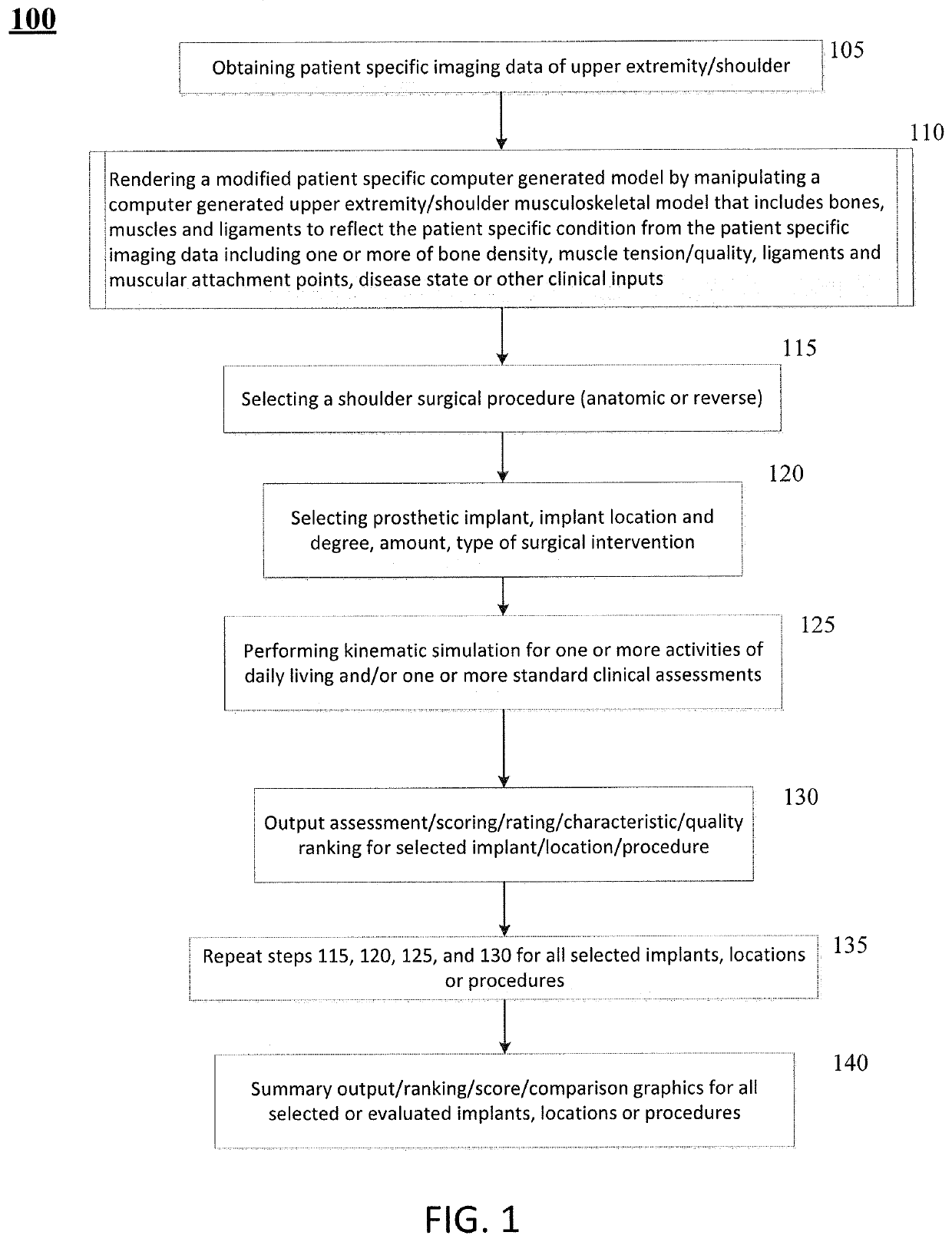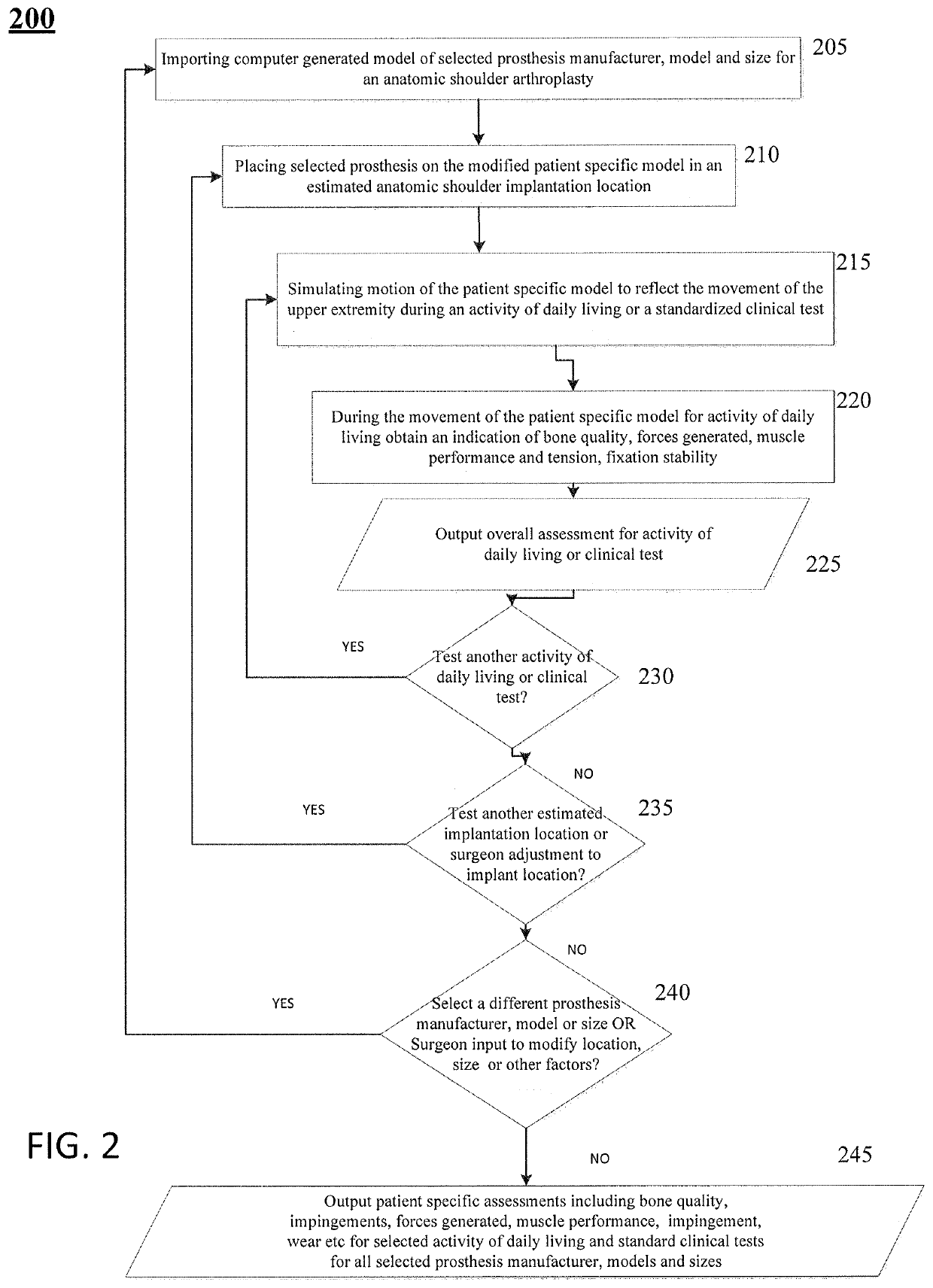Patient specific 3-d interactive total joint model and surgical planning system
a total joint model and patient technology, applied in the direction of shoulder joints, prostheses, manufacturing tools, etc., can solve the problems of inadequate bone affixing, inability to satisfactorily determine the orientation of a joint replacement, and wear of bones, so as to reduce the penetration of bone, confirm the configuration of bone fixation, and increase the tuberosity
- Summary
- Abstract
- Description
- Claims
- Application Information
AI Technical Summary
Benefits of technology
Problems solved by technology
Method used
Image
Examples
Embodiment Construction
[0029]Patients requiring shoulder surgery may have one or more of the bones of the shoulder that are not only arthritic, but may also have had previous conditions that have caused bone to wear away. In such cases, there may not be sufficient bone to adequately affix a prosthetic implant to the bone during a routine shoulder surgery. Indeed, the bones may have been worn such that the orientation of a joint replacement cannot be satisfactorily determined to ensure a positive patient outcome.
[0030]The glenoid bone can be subject to increased wear due to bone arthritic conditions of the joint, and due to alterations of a normal soft tissue envelope surrounding the joint. In such cases, the orientation of the face of the glenoid portion of the scapula bone may be altered so that the humeral bone is no longer appropriately opposed to the glenoid surface. In the case where the glenoid is severely worn, there can be two or more risks a surgeon must balance in an attempt to improve shoulder ...
PUM
| Property | Measurement | Unit |
|---|---|---|
| Fraction | aaaaa | aaaaa |
| Fraction | aaaaa | aaaaa |
| Fraction | aaaaa | aaaaa |
Abstract
Description
Claims
Application Information
 Login to View More
Login to View More - R&D
- Intellectual Property
- Life Sciences
- Materials
- Tech Scout
- Unparalleled Data Quality
- Higher Quality Content
- 60% Fewer Hallucinations
Browse by: Latest US Patents, China's latest patents, Technical Efficacy Thesaurus, Application Domain, Technology Topic, Popular Technical Reports.
© 2025 PatSnap. All rights reserved.Legal|Privacy policy|Modern Slavery Act Transparency Statement|Sitemap|About US| Contact US: help@patsnap.com



